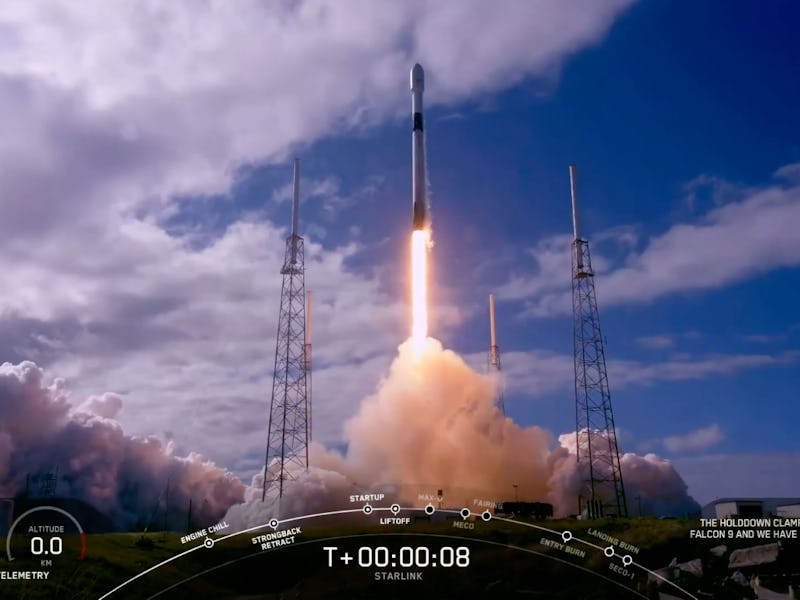SpaceX Starlink takes big step forward with second groundbreaking launch
SpaceX's new launch went off without a hitch.

Liftoff! SpaceX sent up a second batch of 60 Starlink satellites Monday morning, taking another big step toward its plan to use thousands of satellites to provide low-latency internet access.
“These 60 new satellites will make Starlink one of, if not the largest, satellite constellation to date,” Lauren Lyons, an engineer with the Starlink team, said during the company’s live coverage.
The set of 60 satellites lifted off at 9:56 a.m. Eastern time from from Space Launch Complex 40 at the Cape Canaveral Air Force Station in Florida. The mission used a Falcon 9 first stage booster, the first time ever that SpaceX has flown the same booster four times. It’s also the first time that SpaceX has re-used a fairing protecting shied from a previous mission, a big step forward in the company’s goal to make rockets reusable.
Eight minutes after launch, the company successfully landed the booster on the Of Course I Still Love You droneship in the Atlantic Ocean. Not only was it the first time SpaceX flew the same booster four times, but also the first time the firm successfully landed the same booster four times. Although the company was originally expected to collect the fairing halves using the Ms. Tree and Ms. Chief ships, the team switched ahead of launch to a sea-based recovery.
It’s a big step forward for SpaceX’s ambitious constellation, one that could eventually fund the company’s more ambitious targets like a city on Mars and a planet-hopping network. The entire rocket launch industry only brings in around $5 million in revenue, while the internet connectivity industry accounts for a staggering $1 trillion in annual revenue. If SpaceX can claim even three percent of that, as CEO Elon Musk suggests, it could boost the company’s revenue to expand even further.
With the promise of fast and reliable internet to remote and rural communities, SpaceX could find itself with a very receptive audience.
A SpaceX Starlink satellite unfolding.
SpaceX Starlink: the mission comes together
Starlink’s goal is to use thousands of low-orbiting craft to provide low-latency internet access. Where there are only around 5,000 satellites orbiting the Earth right now, SpaceX has applied for permission to fly up to 42,000 Starlink satellites.
Monday’s launch follows on from the first batch of 60 that launched in May 2019. Lyons described that initial batch as “very promising.” Musk used the nascent constellation to send a tweet in October. SpaceX has since updated the Ka and Ku bands to boost spectrum capacity for users.
Part of the goal with Starlink is to deploy the satellites at a lower altitude. After the first stage booster separated, the second stage’s single Merlin vacuum engine ignited. The second stage reaches an altitude of 280 kilometers before deployment. The satellites then use their onboard ion thrusters, powered by krypton, to move to their intended 350-kilometer orbit height over the course of several weeks.
This is the first Falcon 9 first stage booster to fly on four missions. The first was the Iridium-7 flight in July 2018. The second was the SAOCOM-1A flight in October 2018. The third was the Nusantara Satu flight in February 2019.
This was also the first time SpaceX re-used a fairing. The protective shield previously flew on the Arabsat-6A Falcon Heavy mission, the second non-test flight for the world’s most powerful rocket that was launched in April 2019.
Rewatch the mission below here:
The company expects to start providing services for the northern United States and Canada in 2020, after six launches have been completed. Global service for almost all of the populated world is expected to come online in 2021, after 24 launches.